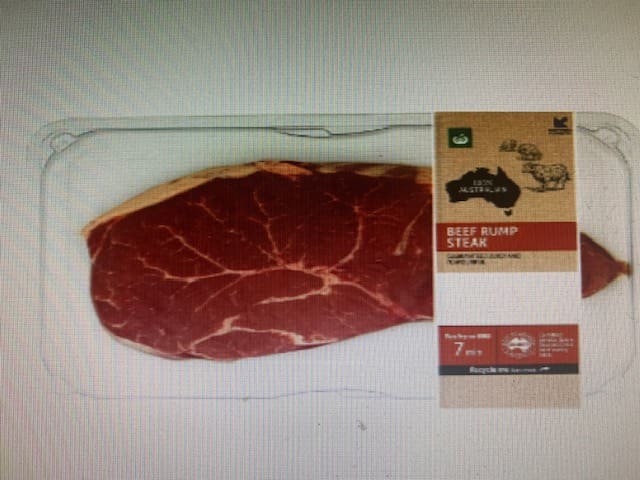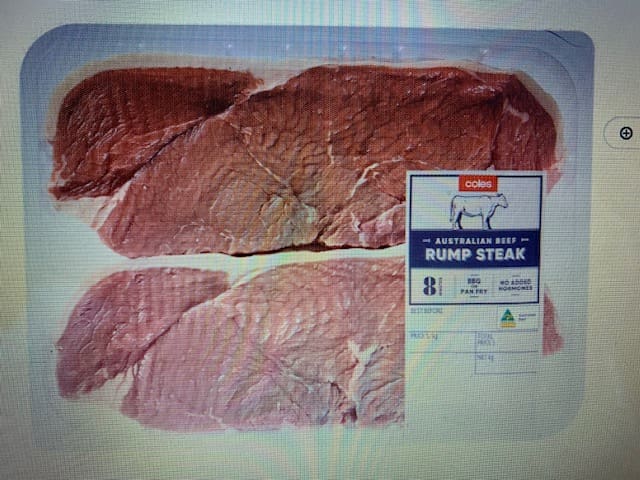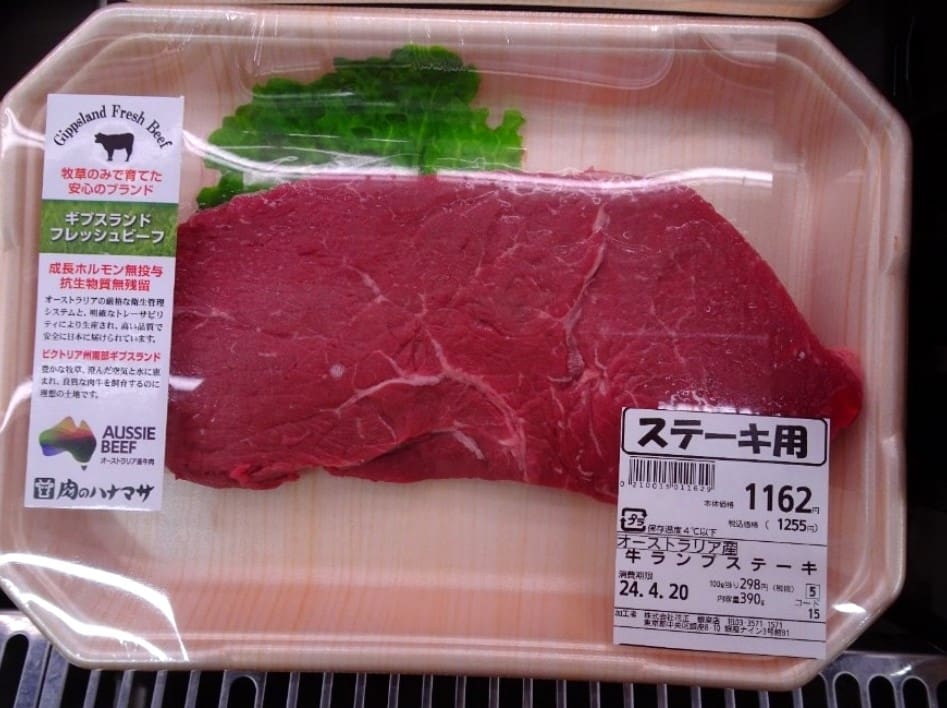
A comparison of recent retail prices for Australian beef being sold in Japan suggests it is as cheap, if not cheaper than similar product being stocked in Australian supermarkets.
The summary was prepared while in Japan last month by prominent supermarket price scrutineer Andrew Dunlop, who earlier in his career spent 18 years in Japan with the Australian Meat & Livestock Corporation (now MLA) and other companies in the meat trade.
Mr Dunlop included a similar Japan/Australia retail price comparison in his earlier submission to the ACCC Inquiry into supermarket retailing.
So is the summary below comparing apples with apples, ie leading supermarket retailers in both countries? Beef Central has done some due diligence.
Unlike Australia, supermarket retailing in Japan has much more strata to it than what’s seen here – everything from premium to budget, no frills, often targeted as wholesale/retail where the main customers are small ‘ma and pa’ restaurant operators.
 At least some of the example photos published below are from Japan’s Hanamasa retail network, classified as a ‘discount retailer’ in Japan. The business has been described to Beef Central as an ‘absolutely no-frills operation, akin to a chefs’ supplies business.” Nevertheless, it is open to the public for small volume retail sales.
At least some of the example photos published below are from Japan’s Hanamasa retail network, classified as a ‘discount retailer’ in Japan. The business has been described to Beef Central as an ‘absolutely no-frills operation, akin to a chefs’ supplies business.” Nevertheless, it is open to the public for small volume retail sales.
Hanamasa has a long-term supply arrangement with G&K O’Connor in Victoria, marketed under the Gippsland Fresh brand. The product is grassfed beef (to avoid any confusion, not Certified Grassfed YG type premium product) . Many would argue this is not a like-for-like comparison with Woolworths or Coles GFYG/YG, MSA-graded product, with additional company specs overlaid on that for meat colour, HGP use and other factors. Direct cut comparisons are also difficult in some of the examples.
One Japan market expert we spoke to about the exercise said a more direct comparison would have included higher-end Japanese retailers like Aeon’s Jusco chain may have been more appropriate.
 Producer lobby groups the Australian Beef Association and the Australian Cattle Industry Council have provided comment about Mr Dunlop’s findings, published further below.
Producer lobby groups the Australian Beef Association and the Australian Cattle Industry Council have provided comment about Mr Dunlop’s findings, published further below.
Given the proviso outlined above, here’s a summary of what Mr Dunlop found during his visit last month to Japanese supermarkets in Tokyo.
A previous survey he undertook in mid 2023 similarly indicated that Australian beef was being retailed at similar prices to what was seen back in Australia.
“The retail business in Japan is far less concentrated than in Australia with a large number of retailers operating and each having only a small share of the market. No single retailer would constitute more than 10pc of the market overall, although in some areas individual operators could command up to 20pc,” Mr Dunlop said.
“Japanese retail business is fiercely competitive and very sensitive to consumer criticism.”
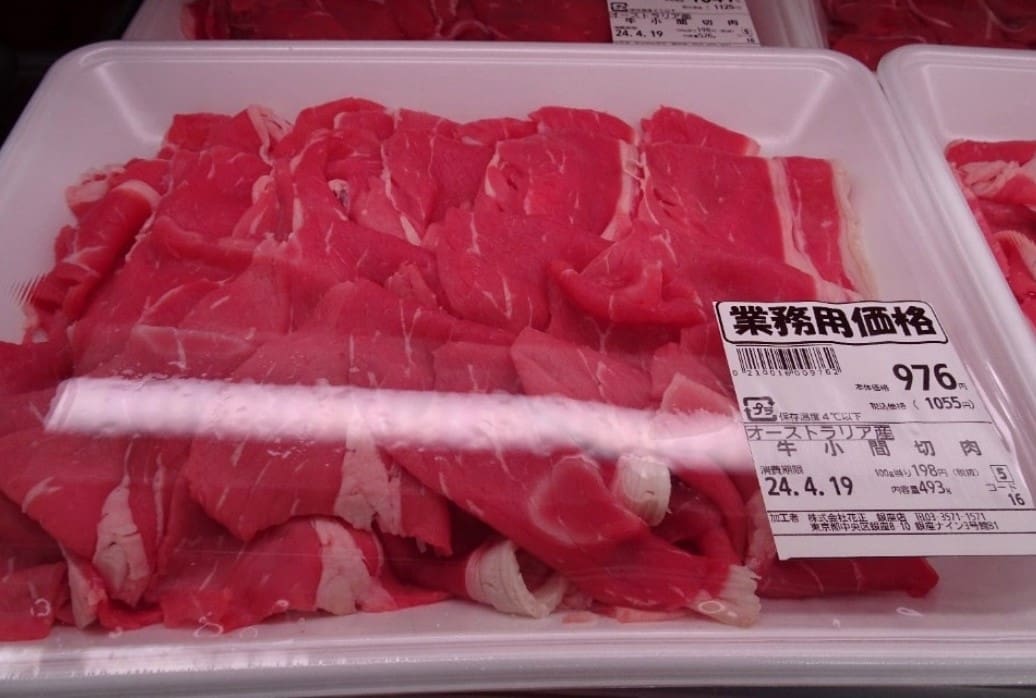
Above is Australian beef retailing in a Japanese supermarket in Tokyo described as comparable to Australia’s Big Two. This is thinly sliced product equivalent to stir fry product in our supermarkets at home. The price is 198 yen per 100g and as the yen is currently at parity, it translates to A$19.80/kg (date on the product is 19 April 2024, weight 493g, price 976 yen but 1055 yen including 8pc consumption tax).

Australian Rump Steak retailing in Tokyo at 298 yen per 100g or A$29.80 per kg. “The level of preparation and trim is superior to what we see in Australia and this is the centre cut of the rump,” Mr Dunlop said. Date on the product is 20 April 2024, weight 390g, price 1162 yen but 1255 yen including 8pc consumption tax).
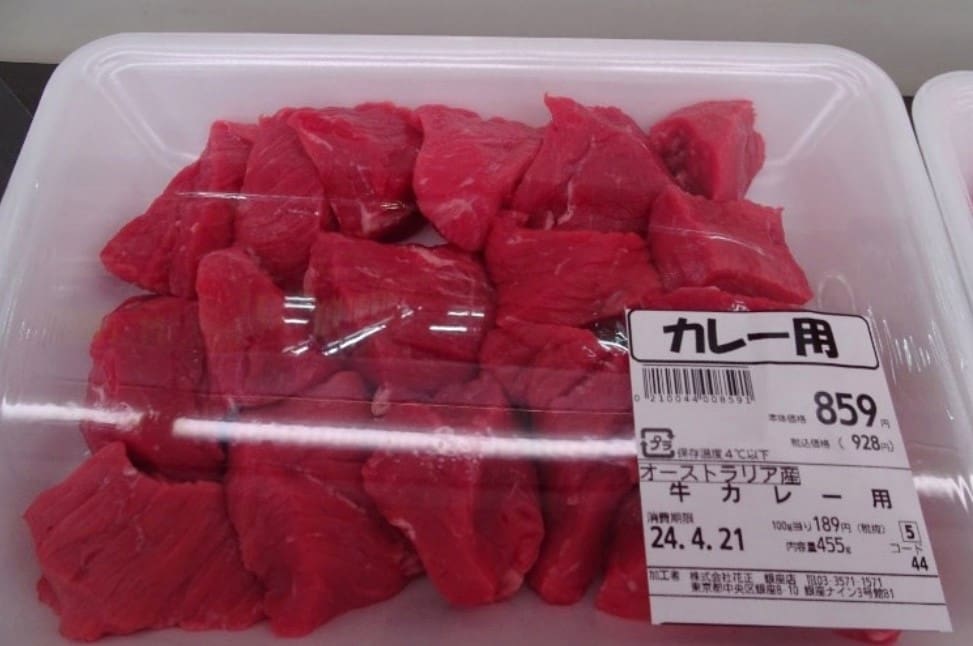
Well-trimmed Australian beef cubes for casserole (used for the popular beef curry in Japan) retailing in Tokyo at 189 yen per 100g or A$18.90 per kg. Again, you will note the superior level of trim and preparation with almost no fat and little sinew. (Date on the product is 21 April 2024, weight 455g, price is 859 Yen but 928 yen including 8pc consumption tax).
In his earlier commentary on the topic, Mr Dunlop said Japanese supermarkets put a lot of effort into presentation of product that “left Australian supermarkets for dead.”
During his earlier November marketplace visit, he noted US product was almost absent, which stood to reason, as US beef and cattle prices are currently the highest on record and Japanese buyers are very price sensitive.
There was a quantity of Australian product on display under the brand Gippsland Fresh. The level of preparation and presentation of the product were just superb. This product has been killed and processed in Australia, shipped to Japan as boxed beef in refrigerated containers, cleared customs after paying a 27pc import tax (tariff), distributed to the retailer and prepared by trimming slicing and placed on overwrapped poly trays for display,” he said.
“Given the superior preparation of the product, the cost of transport to Japan by refrigerated sea containers, the impost of 27pc import tax, it is cheaper to buy Australian beef in a competitive Japanese supermarket than it is to buy Australian beef in the uncompetitive Australian supermarket retail system,” Mr Dunlop concluded.
“It seems that Japanese retailers have passed on lower livestock prices to their consumers whereas evidence to date suggests Australian supermarkets are yet to do so,” he said.
“Failure to pass on reduced costs to consumers is harming all Australians, as food prices – including red meat – feed into the Australian Bureau of Statistics’ consumer price index, which is a key indicator the Reserve Bank uses when setting interest rate policy.”
ABA, ACIC comment
Both the Australian Beef Association and Australian Cattle Industry Council lobby groups offered comments on Mr Dunlop’s findings.
“Japanese customers are now paying lower prices for the same cuts of Australian grassfed beef than domestic customers are paying here in Australia,” ABA executive director David Byard said.
“Australian beef was being retailed at cheaper prices to those seen in Coles and Woolworths supermarkets here in Australia,” he said.
ABA looked at three products of similar description and compared the prices consumers are paying here and those in Japan – stir fry, rump and cubes used in casseroles here and popular in Japan for beef curry.
Stir fry beef was retailing in Coles and Woolworths at $20-25 per kg and is rarely seen on special compared with $19.80 per kg in Japan. “It is cheaper in Japan than back in Australia’s two major supermarkets,” he said.
Rump steak in Coles and Woolworths has been retailing at $28.00 per kg for most of the past 12 months although short-term special prices were $22 per kg. The level of trim on the Japanese product was far superior and offered the best part of the rump at $29.80 per kg. We would argue that the product was slightly dearer but far superior, so effectively cheaper in Japan than back in Australia’s major supermarkets,” he said.
Cubed beef in Coles and Woolworths has for the past 12 months been offered at $20 per kg and is rarely discounted, so at $18.90 per kg in Japan was again is cheaper than in Coles or Woolworths.
“In Japan trim, quality and presentation are of a higher standard than our supermarkets offer us. However, this aside, the Japanese family are enjoying our grassfed product at lower costs than us.”
Understanding Japanese retail prices for Aussie beef
To answer this question ABA consulted the chairman of the Australian Cattle Industry Council lobby group, and a past CEO of Australia’s largest beef processing company John Gunthorpe.
“Australia and Japan have vastly differing retail outlets for beef,” Mr Gunthorpe said.
“In Japan, there are four value offerings ranked Wagyu, Domestic Holstein, Imported Grain-fed (USA and Australia) and Imported Grass-fed (Australia).
“So, with grassfed beef products we are dealing at the less expensive end of the offering where consumers are purchasing on price, more so than eating satisfaction.”
“Secondly, supermarkets in Japan are far less concentrated in their ownership than in Australia with many retailers operating and each having only a small share of the market. No single retailer would constitute more than 10pc of the market overall.
“Beef destined for the Japanese consumer is processed in Australia, vacuum packed, shipped by sea (at a cost approaching A$1 per kg) and had a 24.1pc import duty imposed upon it entering Japan.
“Yet it is sold at lower comparative prices than it is in Australia’s major supermarkets. The reason why is lower profit margins, more competition, no price gouging,” Mr John Gunthorpe said.
He suggested the study provided an opportunity to estimate the cost to Australians of this nation’s supermarket duopoly.
“If we remove the additional costs of the beef supply chain from the Japanese prices, then this provides a price that the competitive Japanese supermarkets could sell their beef products to Australian customers. It is also the additional cost paid by Australian customers for these cuts of beef due to the lack of competition here,” he said.

“So there is the cost to Australian families in our supermarkets from having a duopoly of large supermarket chains versus local small competitive stores as found in Tokyo,” Mr Gunthorpe said.
“However, these figures are conservative, as the Japanese trim to present such superior offerings must be harder than here. Therefore, the import duty and shipping costs would be applied to this lost trim meat increasing the potential savings for Australian customers.”
ABA contended that the analysis was further evidence of the large supermarkets abusing their power and price gouging, David Byard said.
“Since there is such concentration in ownership in retailing, our industry suffers from a lack of competition, and this is harming our domestic consumers and adding to inflation,” he said.
“ABA further contends that the processing sector that slaughters and bones livestock is efficient, being able to produce Australian beef into primal cuts that can be exported to Japan by sea and retailed in Japan at prices cheaper than Coles and Woolworths supermarkets can.”
Both Coles and Woolworths had adopted a recent sales strategy of selling more products at fixed weights and less at ‘catch weight’, he said.
Price per unit, although based on weight, was fixed, he suggested.
“Packs of 1kg and 500g mince, stir fry, casserole cubes, and sausages are now commonplace. More steak cuts are also being retailed this way. In Coles, neither the price of the pack, nor the price per kg is displayed. and it is left to the consumer to read the shelf label which can be difficult and sometimes confusing.”
“In addition, pack sizes of different items are different, so mince comes in 1kg or 500g size, scotch fillet at 480g, eye fillet at 300g (the only item with a price on it), and sandwich steak at 400g – further confusing the consumer as to what they are paying per kg.”
“Consumers have less information conveniently available to them with this presentation. As seen above, Woolworths does have pricing information on their fixed-weight products but is less than complete.”
